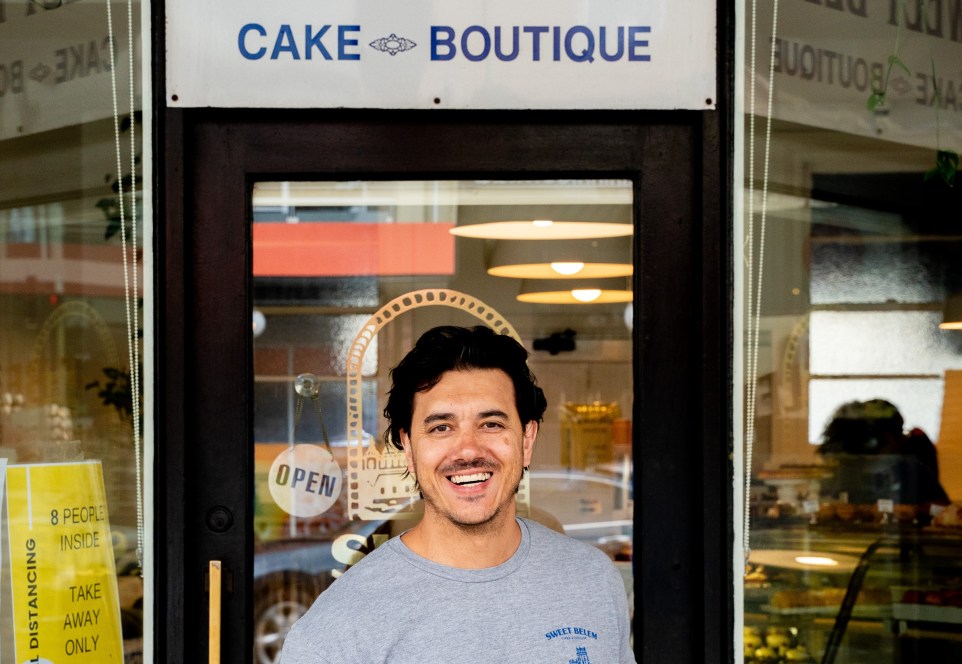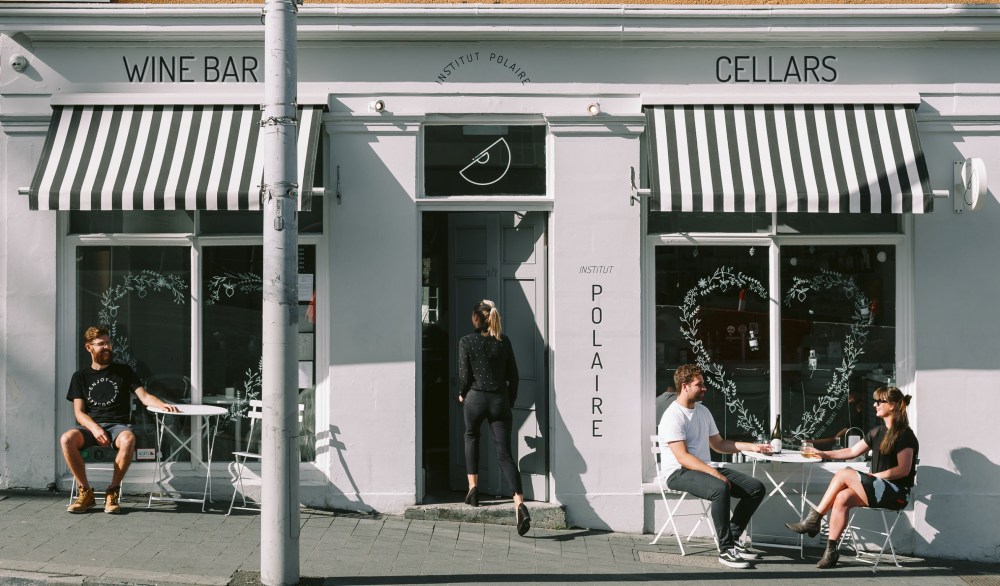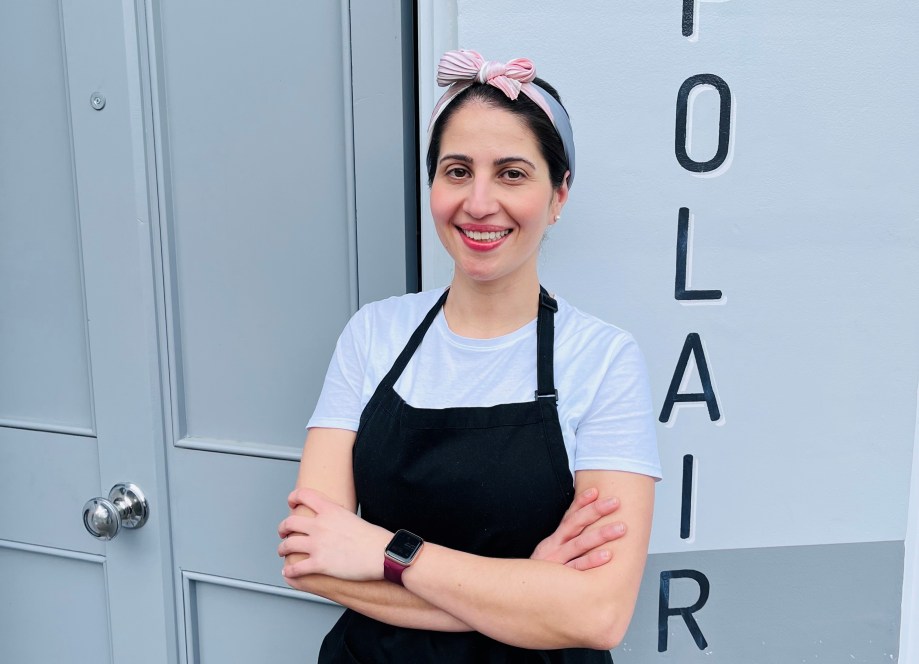Caramel and custard are stalwarts in the pastry world. When combined, the two create crème caramel (aka flan), a dessert that has long been revered for its simplicity. Iterations of crème caramel are set apart by ingredients, preparation and presentation, but linked back together by foundational markers.
Hospitality speaks to Sweet Belem’s José Silva and Institut Polaire’s Gabriela Macedo about the makings of a good crème caramel, their takes on the dessert and why it will always be a staple.
Crème caramel is ubiquitous within French cookery, but Spaniards claim to be the original inventors of the dish. After Arab traders brought sugarcane to Europe, Spanish cooks developed a sweet soft custard that would go on to inspire spin-offs across the globe.
Today, crème caramel is a mainstay dessert in multiple cuisines. The Philippines’ leche flan uses evaporated and condensed milk to form the custard, with the same ingredients found in crème caramels made in parts of South America. In Japan, purin skips the cooking process altogether and using gelatin to set the dessert.
Sweet Belem Owner Jose Silva hails from Portugal where crème caramel holds a significant status within the culture. “Pudim is what crème caramel is called in Portuguese,” he says. “It’s one of the staple desserts we have, and different regions have different recipes.”

Pudim has been a long-time favourite for Silva, with the dish eliciting fond memories of his upbringing. “I grew up with it and it’s one of my favourite things (I love anything custardy),” he says. “I came to Australia when I was 12, so I had a lot of my childhood in Portugal. Crème caramel was my go-to dessert as a kid and my aunties always made it for special occasions.”
Institut Polaire’s Head Chef Gabriela Macedo has similar sentiments towards crème caramel and considers it to be a universally lauded dessert. “Crème caramel is the classic out of all the French desserts,” says the chef. “Everybody has an experience with it — it reminds you of home — and that’s why we picked the dessert for our menu.”
The restaurant has a seasonal approach to its offering, and crème caramel is almost always on the menu during the winter season. “The ingredients are always available because it’s a pretty simple recipe, but we like to put it on in the winter because you’re looking for something rich, sweet and comforting,” says Macedo.
Crème caramel starts with the base ingredients. Sweet Belem and Institut Polaire use a classic recipe to make a base crème caramel custard, with other additions used to tweak the result. “The core components are milk, sugar and eggs, and we also add vanilla bean,” says Silva. “Some Portuguese like to use a little bit of cinnamon and lemon zest in the milk instead of vanilla.”
Silva uses vanilla bean as opposed to extract to flavour the custard for an enhanced taste profile. “You can use extract if you want, but obviously the quality of the ingredients is going to determine the end product,” he says.

Institut Polaire in Hobart sources ingredients from local farms, opting to forgo chicken eggs for duck eggs in the dessert. “We decided to recreate the recipe with Tasmanian ingredients, and that’s why we use duck eggs,” says Macedo. “They are really rich and make the crème caramel creamier; we use the yolk and the whole egg for the custard.”
While most French recipes call for milk, Macedo uses cream. “We use pure cream; it’s really rich and the percentage of fat is high, so it adds more flavour to the crème,” she says. “It’s from a lady who has farms in the west of Tasmania.”
As with any dessert, crème caramel starts with preparing the ingredients. “First, we separate the eggs, we measure the sugar, milk and pure cream and we blend it all together,” says Macedo.
The white to yolk ratio in the eggs can be adjusted depending on the intended size of the crème caramel. “The amount of yolk and white you’re using really depends on the portions you are a making, but generally it’s a 1:1 ratio, because normally you have double the white inside an egg, so you’re going to double the amount of yolk,” says Macedo. “When you get eggs from a really small [farm], you can’t control the exact size, so we weigh the eggs and always use the same amount of yolk and egg white.”

Infusing the custard with flavouring is the next step. “You infuse the milk with vanilla bean by bringing the milk to the boil and letting it sit for half an hour to an hour,” says Silva. “Then bring it back to the boil and [separately] whisk your eggs and sugar. You add your hot liquid to the eggs, whisk it and sieve it so there isn’t any shell or lumps from the egg.”
The caramel sauce sees chefs brown white sugar in a pan on the stovetop, but there are two common techniques used to achieve the best result. “There is dry caramel where you put sugar straight into the pan and then you stir it,” says Silva. “Or there’s wet caramel where you make a sugar syrup with sugar and water and reduce it until it’s amber. We normally do a sugar syrup because we make big batches and it’s easier to control. But you have to be very careful as it’s about 165 degrees Celsius; we gently add warm water because it steams up like a volcano.”
The sauce component of crème caramel acts as a barrier between the custard and the tin it’s cooked in, with Macedo also seizing the opportunity to include additional flavours during the syrup-making stage. “We add kumquats for a little contrast,” she says. “It really complements the flavour, and we do it as a seasonal special.”
The kumquats are cooked separately from the caramel and are also added as a garnish for the final plating of the dish. “We combine them with star anise, cardamom and syrup and cook for an hour at a low temperature,” says Macedo.
Once the caramel has been completed, it’s poured into a lined mould and covered with the custard mixture, a step that ensures the crème caramel is self-sauced when it’s flipped. Once assembled, the tin is partially submerged in a bain-marie.
“You fill it up three-quarters of the way, so it cooks gently and not from the dry heat of the oven,” says Silva. “Otherwise, you curdle the eggs and it becomes like scrambled egg, not custard.”
Cooking times vary depending on the size of the crème caramel. Low and slow is the name of the game when it comes to gauging time and temperature. “It’s about 150 degrees Celsius in the oven; it can be lower, but it will take longer,” says Macedo. “I time it for 55 minutes or an hour depending on the eggs and the yolk; it’s a little bit of chemistry.”
Sweet Belem sells large crème caramel cakes and individual portions which require different cooking times. “I’d say 40 minutes for a ramekin depending on the heat you’re using,” says Silva. “If it’s a steam oven, it’s usually about 10-15 minutes. The steam conducts a lot better than the dry heat which takes about 30 to 40 minutes. The bigger the crème caramel, the longer it takes to cook and set. When you’re cooking a large crème caramel, the outside cooks faster than the inside, that’s why they put a hole in the middle in Portugal, so it cooks evenly. It’s quite easy to do, but it’s also easy to get it wrong. If you don’t cook it enough, it doesn’t set, which means it falls apart (which has happened to me before) when you turn it out.”
Much like a panna cotta, crème caramel is served cold and needs to set completely before it’s plated. Most chefs bake ahead to leave time for the crème caramel to rest. “We let them set and cool down at room temperature,” says Macedo. “We rack them and leave them in the fridge overnight, so they cool down and are at the proper temperature to be served,” says Macedo.
Crème caramel may only be a combination of custard and caramel, but for many chefs, it is a recipe that has always held its own. “I am Brazilian, and we have crème caramel in a traditional way,” says Macedo. “It’s multicultural dessert everybody likes, and it reminds them of home in some way.”
For Silva, pudim or crème caramel is something that has been a big part of his personal life and career. “The Portuguese love crème caramel and obviously our clientele also likes them,” he says. “It’s just one of those classics that is quite hard to achieve. It’s a skill to get a good creme caramel, but at the same time, it’s a crowd pleaser.”
Sponsored Content

Tomkin Partners with D-Still to Elevate the Drinkware Experience
Sponsored by Tomkin

Windsor Farm has a fresh new look!
Sponsored by Frutex
Trending Now
Resources
Lorem ipsum dolor sit amet, consectetur adipiscing elit. Fusce ac ornare lectus. Sed bibendum lobortis...
Lorem ipsum dolor sit amet, consectetur adipiscing elit. Fusce ac ornare lectus. Sed bibendum lobortis...
Sign up for our newsletter
